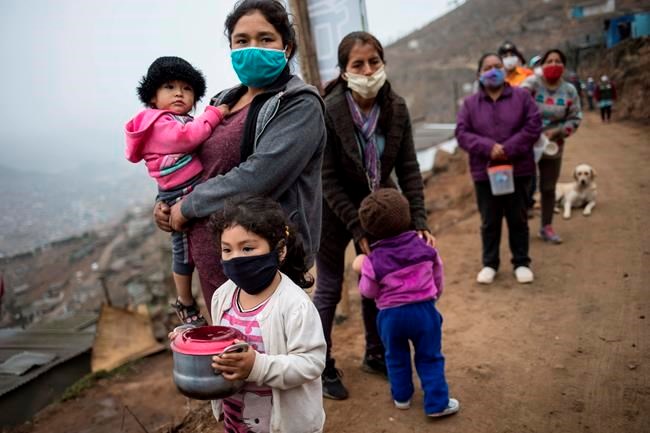WASHINGTON — The International Monetary Fund has sharply lowered its forecast for global growth this year because it envisions far more severe economic damage from the coronavirus than it did just two months ago.
The IMF predicts that the global economy will shrink 4.9 per cent this year, significantly worse than the 3.0 per cent drop it had estimated in its previous report in April. It would be the worst annual contraction since immediately after the Second World War.
For the United States, the IMF predicts that gross domestic product — the value of all goods and services produced in the United States — will plummet 8.0 per cent this year, even more than its April estimate of a 5.9 per cent drop.
This, too, would be the worst such annual decline since the U.S. economy demobilized in the aftermath of the Second World War, which officially ended in 1945.
For Canada, which counts the United States as its biggest trading partner, the IMF estimates GDP will fall by 8.4 per cent this year — 2.2 percentage points below the April estimate.
The European members of the G7 fared even worse: Germany is projected see its GDP decline fall by 10.2 per cent, France by 12.5 per cent, Italy by 12.5 per cent and the United Kingdom by 10.2 per cent.
Japan's decline is estimated at 5.8 per cent, the smallest of the G7 countries.
The IMF issued its bleaker forecasts Wednesday in an update to the World Economic Outlook it released in April. The update is generally in line with other recent major forecasts. Earlier this month, for example, the World Bank projected that the global economy would shrink 5.2 per cent this year.
The IMF noted that the pandemic was disproportionately hurting low-income households, “imperiling the significant progress made in reducing extreme poverty in the world since 1990.”
In recent years, the proportion of the world’s population living in extreme poverty — equivalent to less than $1.90 a day — had fallen below 10 per cent from more than 35 per cent in 1990. But the IMF said the COVID-19 crisis threatens to reverse this progress.
It forecast that more than 90 per cent of developing and emerging market economies will suffer declines in per-capita income growth this year.
For 2021, the IMF envisions a rebound in growth, so long as the viral pandemic doesn’t erupt in a second major wave. It expects the global economy to expand 5.4 per cent next year, 0.4 percentage point less than it did in April.
For the United States, the IMF predicts growth of 4.5 per cent next year, 0.2 percentage point weaker than in its April forecast. But that gain wouldn’t be enough to restore the U.S. economy to its level before the pandemic struck.
For Canada, the IMF predicts 2021 growth of 4.9 per cent — 0.7 per cent above the previous estimate. That's below the projected growth of the five European G7 countries but ahead of Japan.
The U.S. government has estimated that the nation’s GDP shrank at a five per cent annual rate in the January-March quarter, and it is widely expected to plunge at a 30 per cent rate or worse in the current April-June period.
In China, the world’s second-largest economy, growth this year is projected at one per cent. India’s economy is expected to shrink 4.5 per cent after a longer period of lockdown and a slower recovery than was envisioned in April.
In Latin America, where most countries are still struggling to contain infections, the two largest economies, Brazil and Mexico, are projected to shrink 9.1 per cent and 10.5 per cent, respectively.
A steep fall in oil prices has triggered deep recessions in oil-producing countries, with the Russian economy expected to contract 6.6 per cent this year and Saudi Arabia’s 6.8 per cent.
The IMF cautioned that downside risks to the forecast remain significant. It said the virus could surge back, forcing renewed shutdowns and possibly renewed turmoil in financial markets similar to what occurred in January through March. The IMF warned that such financial turbulence could tip vulnerable countries into debt crises that would further hamper efforts to recover.
Its updated forecast included a downside scenario that envisions a second major outbreak occurring in early 2021. Under this scenario, the global economy would contract again next year by 4.9%, it estimates.
— With files from The Canadian Press
Martin Crutsinger, The Associated Press




